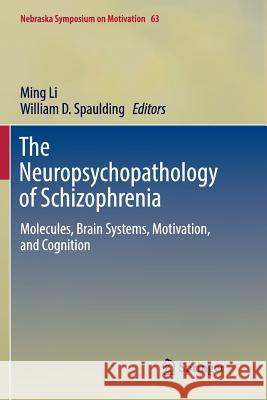The Neuropsychopathology of Schizophrenia: Molecules, Brain Systems, Motivation, and Cognition » książka
topmenu
The Neuropsychopathology of Schizophrenia: Molecules, Brain Systems, Motivation, and Cognition
ISBN-13: 9783319808444 / Angielski / Miękka / 2018 / 257 str.
Kategorie BISAC:
Wydawca:
Springer
Seria wydawnicza:
Język:
Angielski
ISBN-13:
9783319808444
Rok wydania:
2018
Wydanie:
Softcover Repri
Ilość stron:
257
Waga:
0.38 kg
Wymiary:
23.39 x 15.6 x 1.42
Oprawa:
Miękka
Wolumenów:
01
Dodatkowe informacje:
Wydanie ilustrowane











